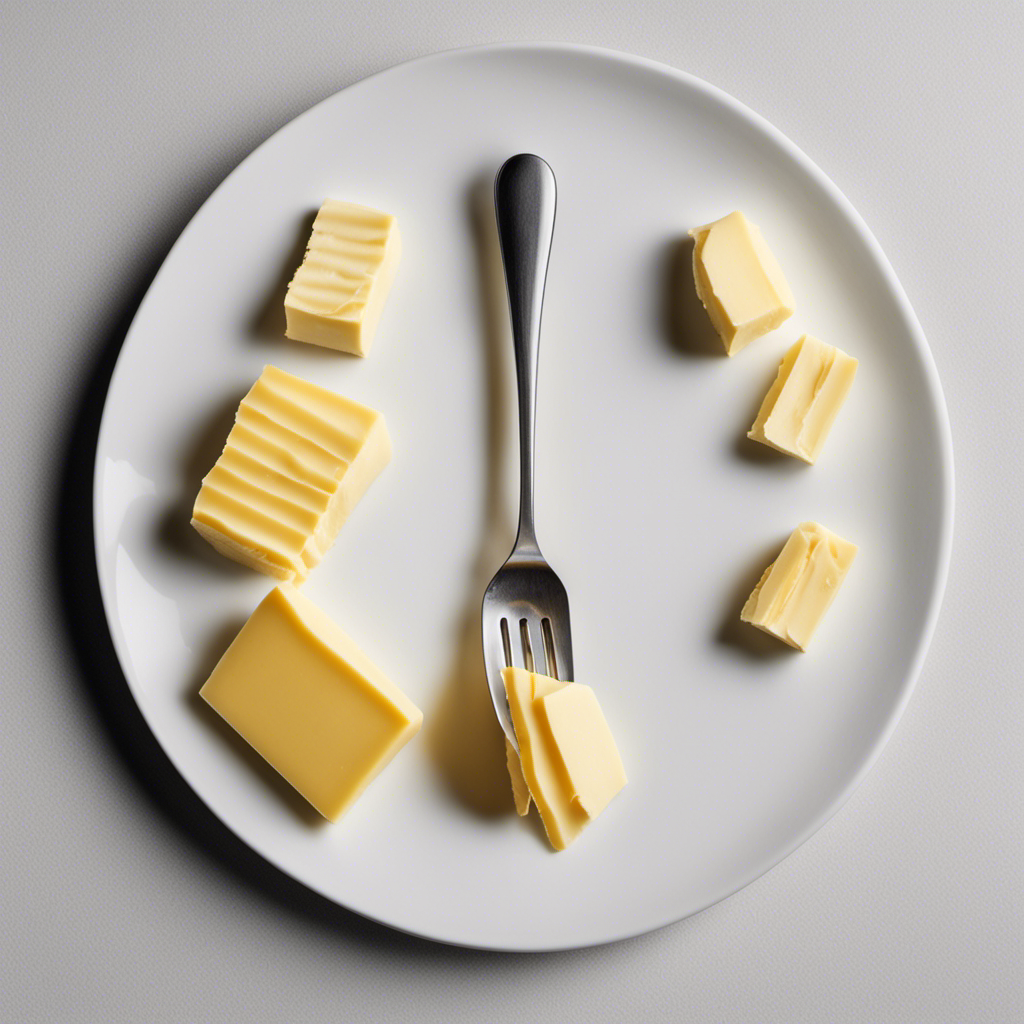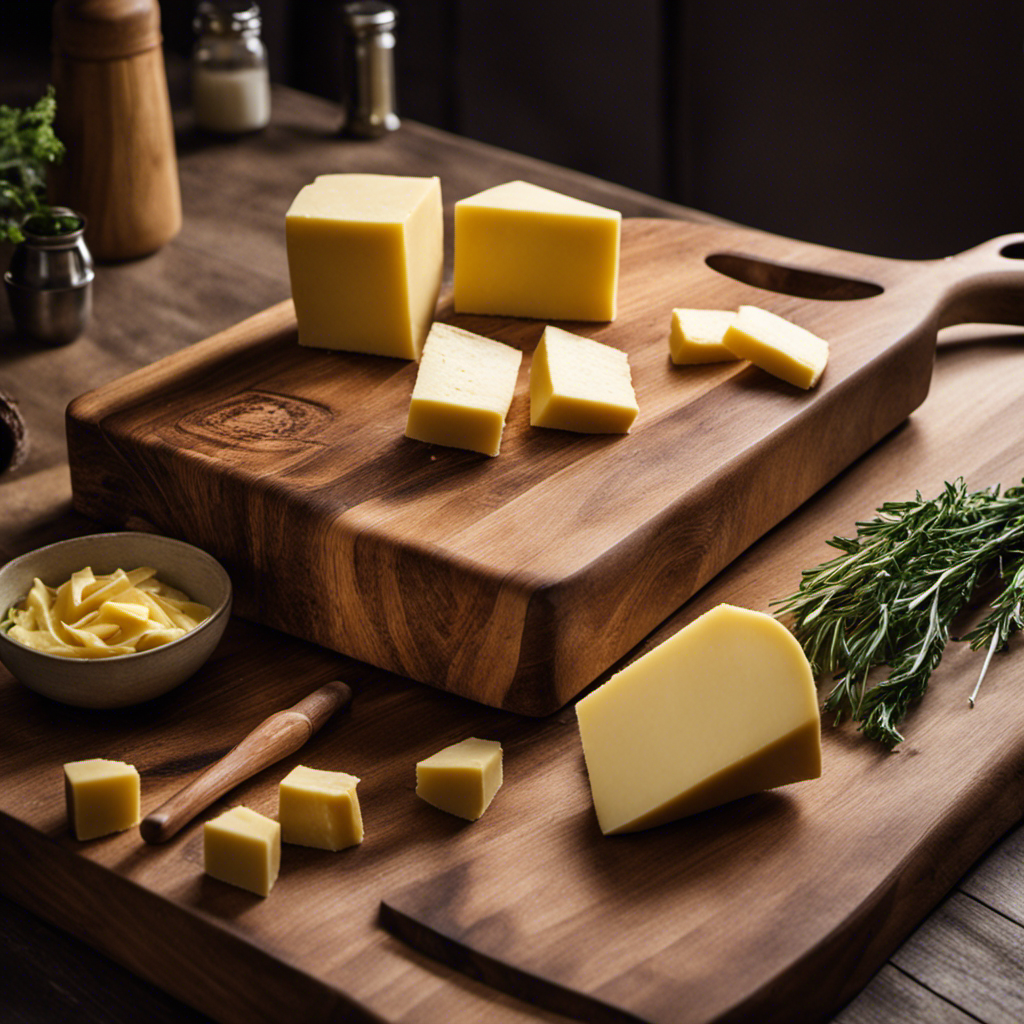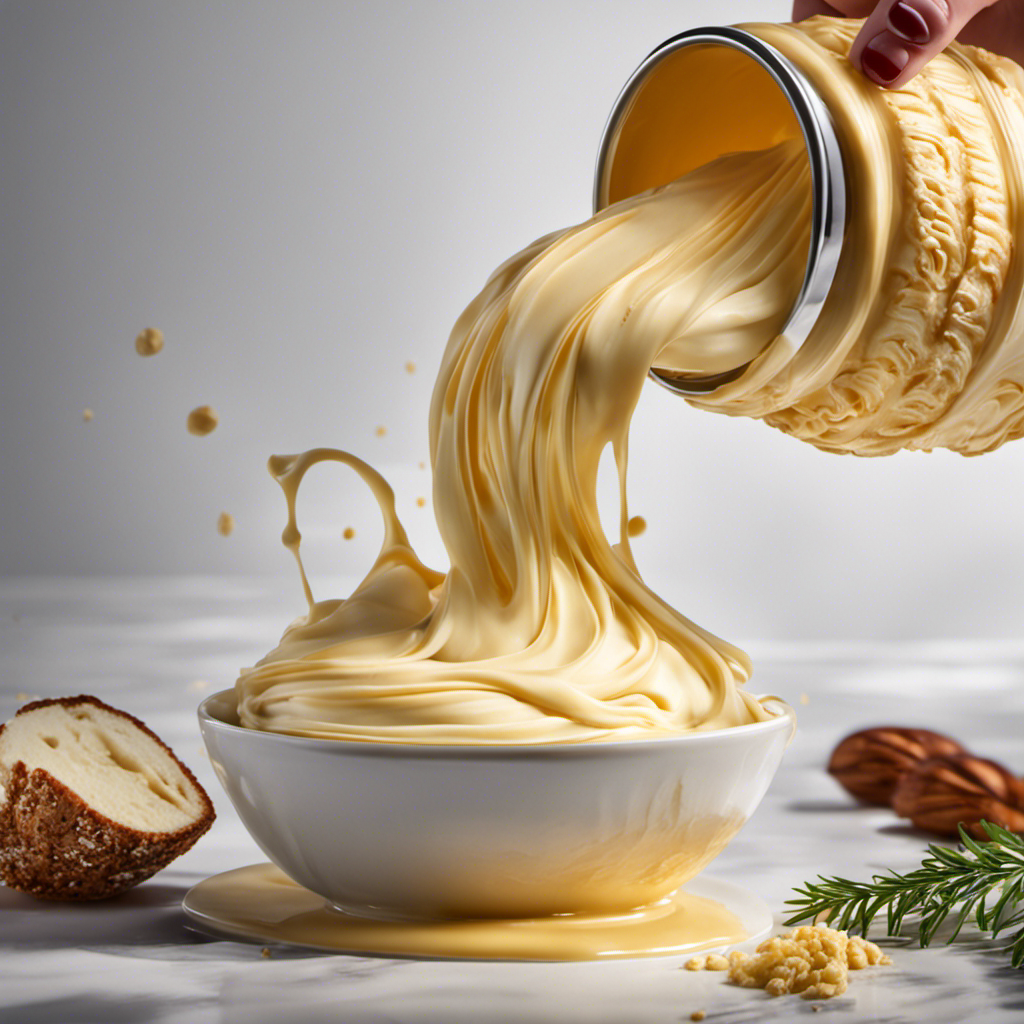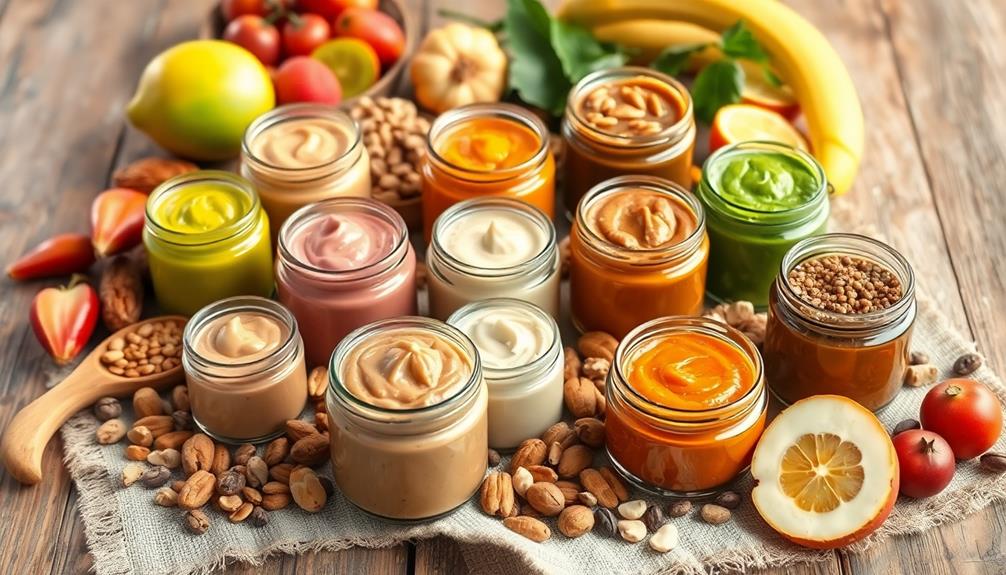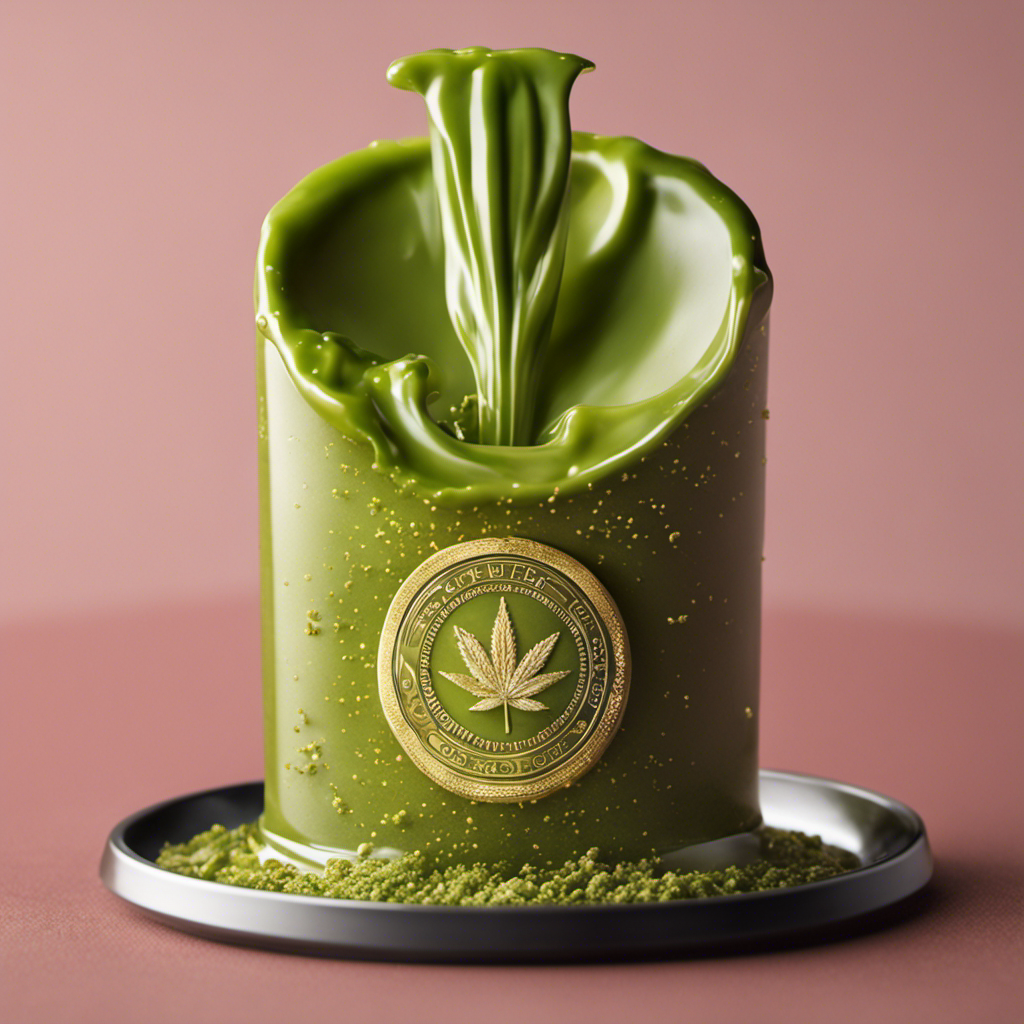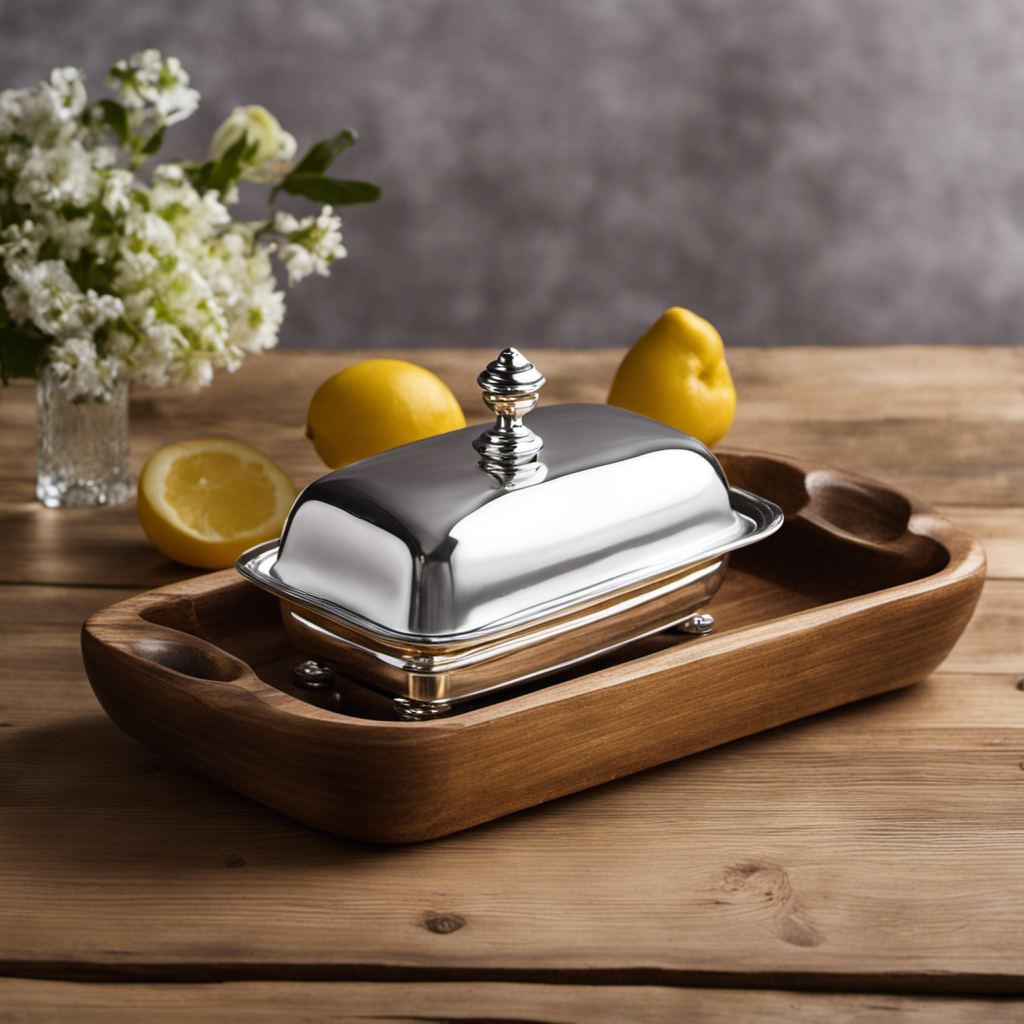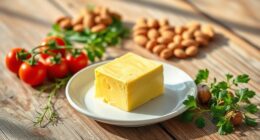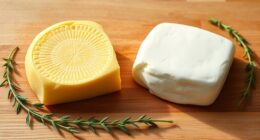Being someone who enjoys cooking at home, I frequently catch myself in the kitchen questioning the conversion of one stick of butter into tablespoons. It’s a recurring inquiry I face.
But fear not! In this article, I will provide you with the answer and more. With my expertise and handy tips, you’ll never have to second-guess your butter measurements again.
So let’s dive in and uncover the stick to tablespoon ratio that will revolutionize your baking and cooking endeavors.
Key Takeaways
- One stick of butter is equal to 8 tablespoons or 1/2 cup.
- Knowing the conversion factor between sticks and tablespoons is important for adjusting measurements in recipes.
- Having the common conversions for butter usage at hand can result in a smoother baking experience.
- Accurately measuring butter is crucial for ensuring the desired texture and taste in baking.
Understanding Butter Measurements
One stick of butter is typically equal to 8 tablespoons.
When it comes to understanding butter measurements, it’s important to know that there are different types of butter available in the market. From unsalted to salted, whipped to clarified, each type of butter has its own unique characteristics and uses.
Additionally, if you’re looking for butter substitutes or alternatives, there are a few options to consider. Margarine, coconut oil, and olive oil can be used as substitutes for butter in some recipes, depending on your dietary needs and preferences.
Now that you know about the different types of butter available and some alternatives, let’s delve into the process of converting sticks of butter to tablespoons.
Converting Sticks of Butter to Tablespoons
To convert sticks of butter to tablespoons, you’ll need to know how many tablespoons are in a stick. In the United States, butter is typically sold in one-pound packages, divided into four sticks. Each stick of butter is equivalent to 8 tablespoons or 1/2 cup.
This conversion factor is important to keep in mind when following recipes that call for specific amounts of butter. By understanding the relationship between sticks and tablespoons, you can easily adjust your measurements to suit your needs.
Whether you’re creaming butter for cookies or melting it for a sauce, knowing how to convert butter measurements will ensure that your baked goods turn out delicious every time.
Common Conversions for Butter Usage
When baking, it’s important to be familiar with common conversions for butter usage. Here are some useful butter measurements and measuring equivalents to keep in mind:
- 1 stick of butter = 8 tablespoons
- 1/2 cup of butter = 1 stick
- 1/4 cup of butter = 4 tablespoons
- 1 tablespoon of butter = 1/2 ounce
Having these conversions at your fingertips can make your baking experience smoother and more efficient. Whether you’re following a recipe or need to make adjustments on the fly, understanding butter measurements and their equivalents will ensure accurate results.
Now that we have a good understanding of common butter conversions, let’s dive into the topic of butter equivalents: the stick to tablespoon ratio.
Butter Equivalents: Stick to Tablespoon Ratio
Remember, knowing the stick to tablespoon ratio can be helpful in accurately measuring butter for your recipes. Whether you’re using sticks of butter or looking for alternatives, it’s important to have the right measurements. Here is a table that shows the conversion of butter from sticks to tablespoons:
| Sticks of Butter | Tablespoons |
|---|---|
| 1 | 8 |
| 2 | 16 |
| 3 | 24 |
Using this ratio, you can easily convert any recipe that calls for sticks of butter into tablespoons. But what if you’re looking for butter substitutes? There are several options available, such as margarine, coconut oil, or applesauce. Each substitute has its own unique flavor profile, so choose the one that complements your recipe the best. Now that you know the stick to tablespoon ratio and have some butter alternatives in mind, let’s move on to handy tips for accurately measuring butter.
Handy Tips for Accurately Measuring Butter
Measuring butter accurately can be made easier with these helpful tips. When it comes to baking, precise measurements are crucial for achieving the perfect texture and taste. Here are some techniques that will ensure your butter measurements are spot on:
-
Use a kitchen scale: Weighing the butter will give you the most accurate measurement, especially when dealing with international recipes that may use grams or ounces.
-
Mark your butter: If you often bake with butter sticks, marking tablespoon and teaspoon measurements on the packaging can save you time and effort.
-
Use a butter dish: A butter dish with pre-measured markings is a handy tool for quickly measuring butter without the need for scales or guesswork.
-
Convert measurements: When using recipes from different countries, make sure to convert the butter measurements correctly using online conversion tools or reference charts.
Frequently Asked Questions
Can I Use Margarine Instead of Butter in Recipes?
Yes, you can substitute margarine for butter in recipes. However, there are some pros and cons to consider. Margarine is lower in saturated fat but may contain trans fats. It’s best to choose a non-hydrogenated margarine for a healthier option.
How Do I Measure Solid Butter if I Don’t Have a Measuring Spoon?
When I’m out of measuring spoons, I use a simple trick to measure solid butter. I slice the stick into tablespoons using the markings on the wrapper as a guide. Easy peasy!
What Is the Difference Between Salted and Unsalted Butter?
Salted and unsalted butter have different amounts of salt added to them. Salted butter adds flavor and can be used in cooking. Unsalted butter is preferred for baking to control the amount of salt. There are no specific health benefits of using unsalted butter.
How Can I Soften Butter Quickly for Baking?
To quickly soften butter for baking, try cutting it into small cubes or microwaving it for a few seconds at a time. Alternatively, you can use alternatives like coconut oil or applesauce in your recipes.
Is It Necessary to Refrigerate Butter?
Refrigerating butter extends its shelf life, but it’s not necessary. Butter can be kept at room temperature for a few days without going bad. For those who can’t or don’t want to refrigerate, alternatives like ghee or margarine can be used.
Conclusion
In conclusion, converting sticks of butter to tablespoons is a piece of cake! Just remember that one stick of butter equals 8 tablespoons.
Whether you’re baking up a batch of cookies or sautéing vegetables, knowing the common conversions for butter usage can save you time and hassle in the kitchen.
So grab your measuring spoons and get cooking with confidence! With these handy tips, you’ll be able to accurately measure your butter and create delicious dishes every time.
